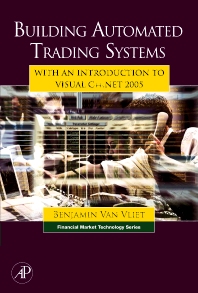Books in Mathematical and quantitative methods
Books in Mathematical and quantitative methods
- 1st Edition
- Volume 6B
- December 14, 2007
- James J. Heckman + 1 more
- English
- Hardback9 7 8 0 4 4 4 5 3 2 0 0 8
- eBook9 7 8 0 0 8 0 5 5 6 5 5 0

Handbook of Econometrics
- 1st Edition
- March 7, 2007
- Benjamin Van Vliet
- English
- Hardback9 7 8 0 7 5 0 6 8 2 5 1 0
- eBook9 7 8 0 0 8 0 4 7 6 2 5 4

Building Automated Trading Systems
- 1st Edition
- Volume 2
- May 15, 2006
- Leigh Tesfatsion + 1 more
- English
- Hardback9 7 8 0 4 4 4 5 1 2 5 3 6
- eBook9 7 8 0 0 8 0 4 5 9 8 7 5

Handbook of Computational Economics
- 1st Edition
- December 1, 2005
- K Srinagesh
- English
- eBook9 7 8 0 0 8 0 4 9 7 8 1 5

The Principles of Experimental Research
- 3rd Edition
- August 1, 2005
- Antonella Cupillari
- English
- eBook9 7 8 0 0 8 0 5 3 7 9 0 0

The Nuts and Bolts of Proofs
- 1st Edition
- December 10, 2004
- Anatoly B. Schmidt
- English
- eBook9 7 8 0 0 8 0 4 9 2 2 0 9

Quantitative Finance for Physicists
- 1st Edition
- Volume 11
- December 5, 2003
- Dekok
- English
- Hardback9 7 8 0 4 4 4 5 1 3 2 8 1

Supply Chain Management
- 1st Edition
- Volume 1
- March 1, 2003
- S.T Rachev
- English
- eBook9 7 8 0 0 8 0 5 5 7 7 3 1

Handbook of Heavy Tailed Distributions in Finance
- 1st Edition
- Volume 3
- August 19, 2002
- R.J. Aumann + 1 more
- English
- Hardback9 7 8 0 4 4 4 8 9 4 2 8 1

Handbook of Game Theory with Economic Applications
- 1st Edition
- April 30, 2001
- Ramazan Gençay + 4 more
- English
- Hardback9 7 8 0 1 2 2 7 9 6 7 1 5
- eBook9 7 8 0 0 8 0 4 9 9 0 4 8

An Introduction to High-Frequency Finance
Related subjects
Data collection and data estimation methodology computer programs
Econometric and statistical methods general
Econometric modeling
Game theory and bargaining theory
Mathematical and quantitative methods design of experiments
Mathematical and quantitative methods general
Mathematical methods and programming